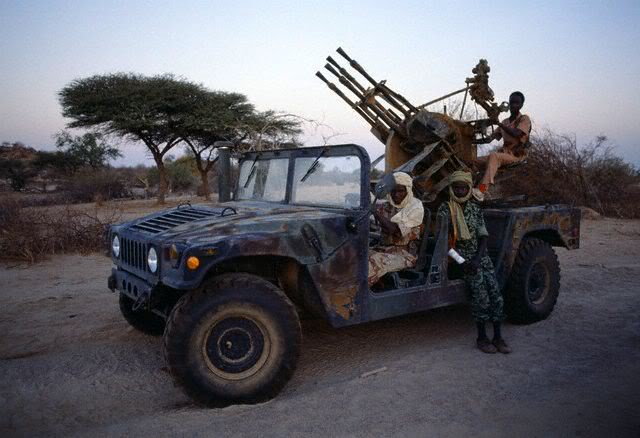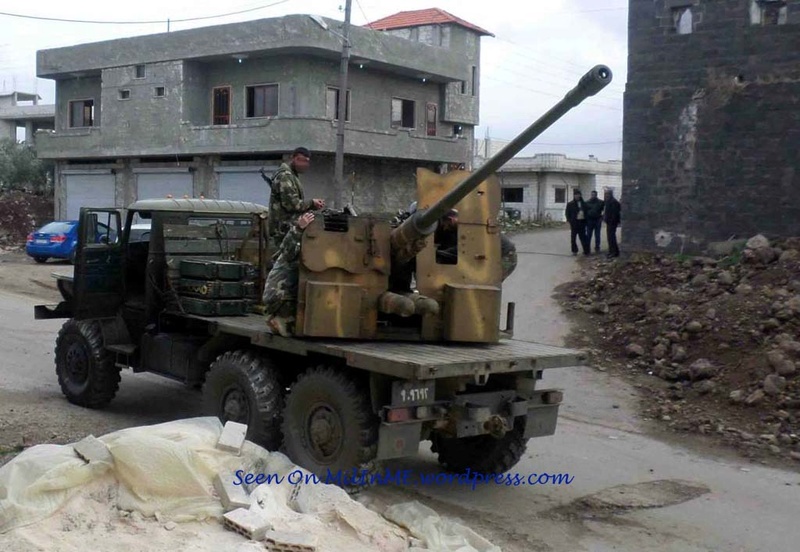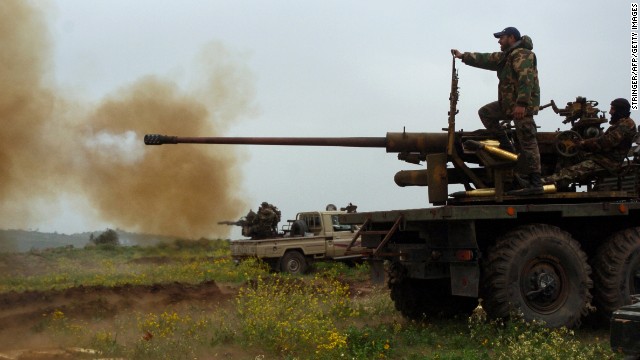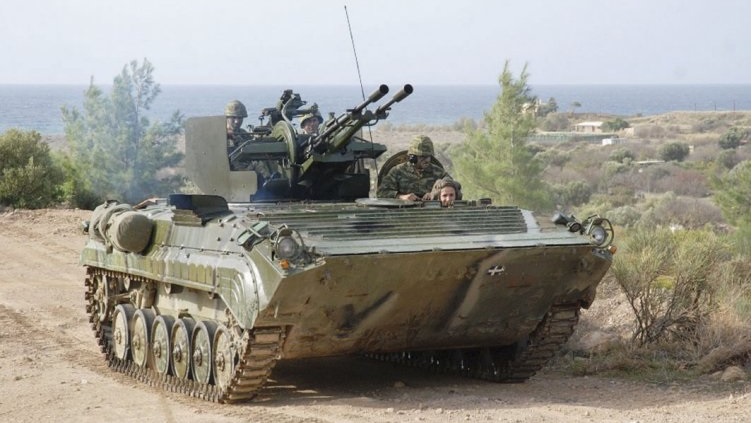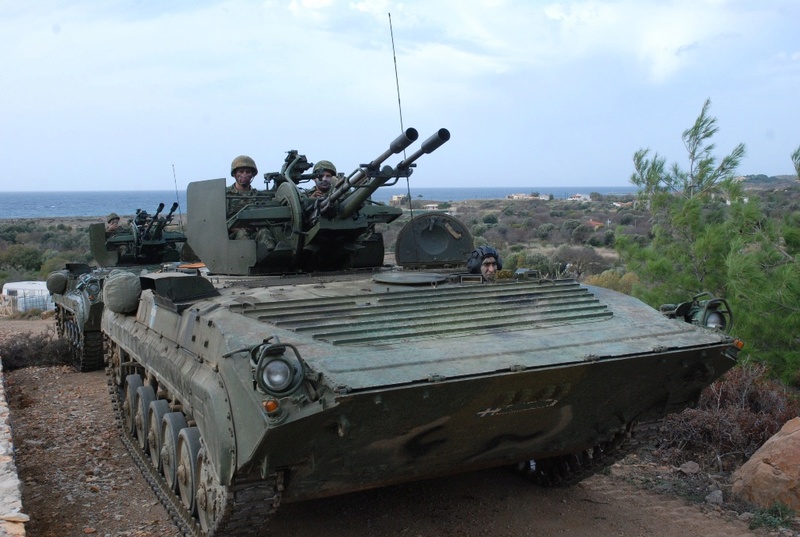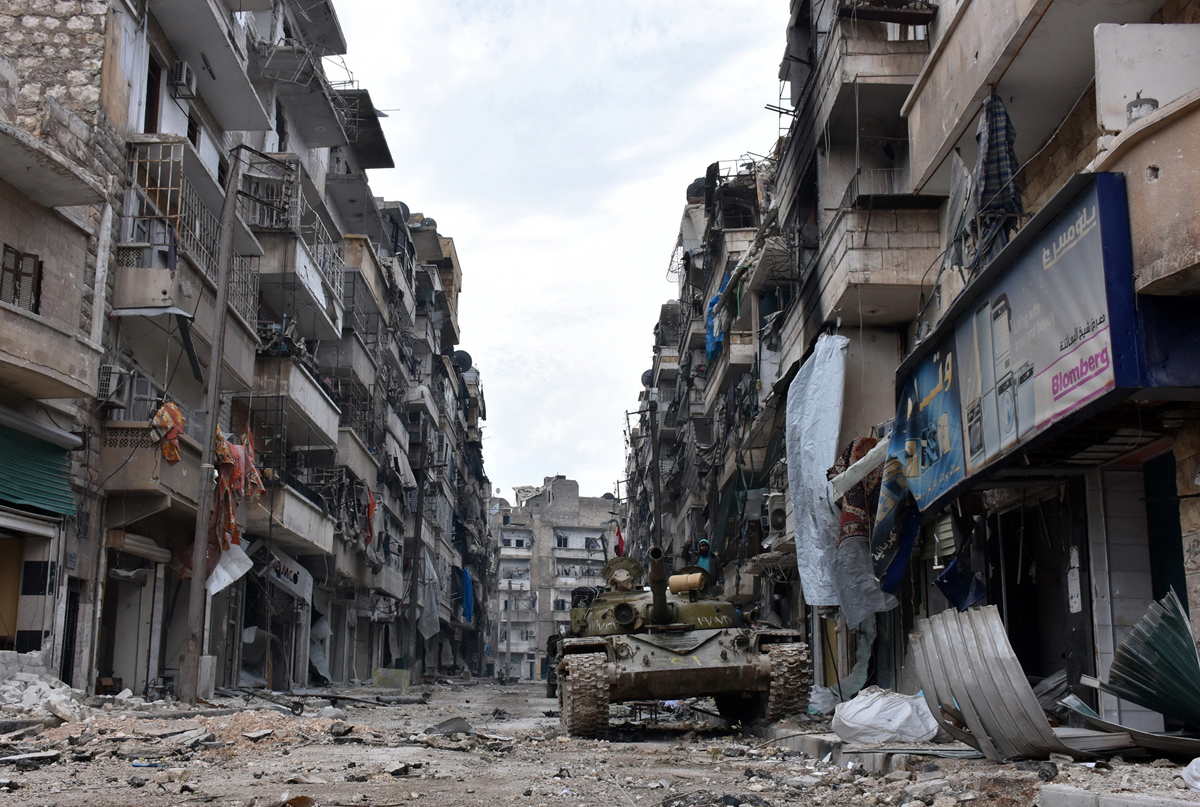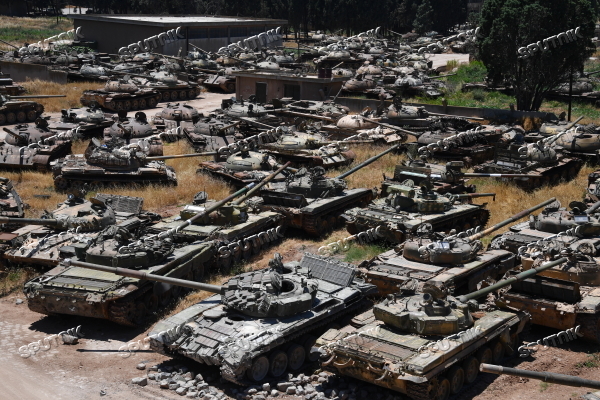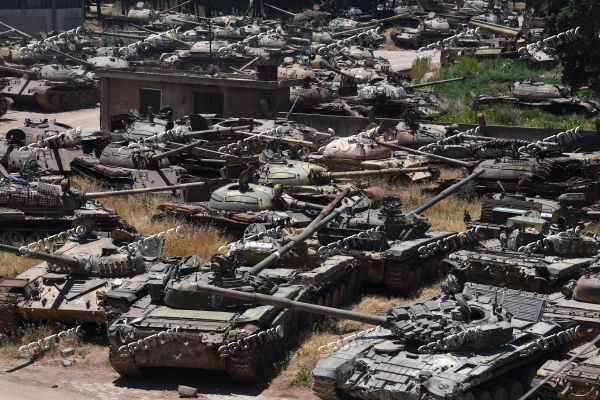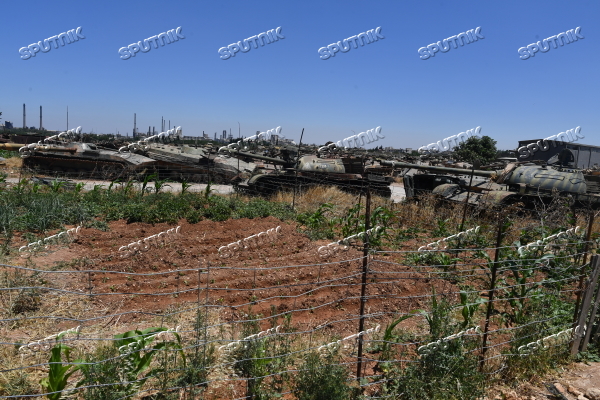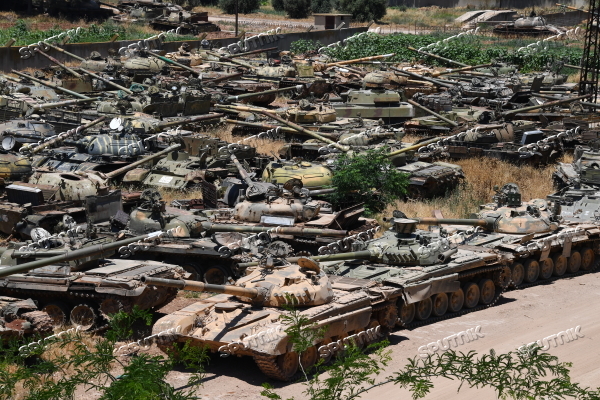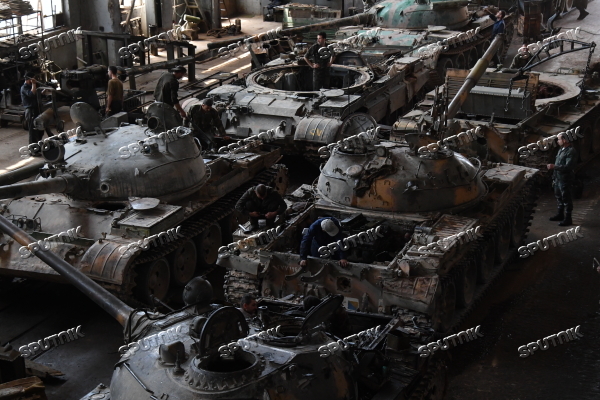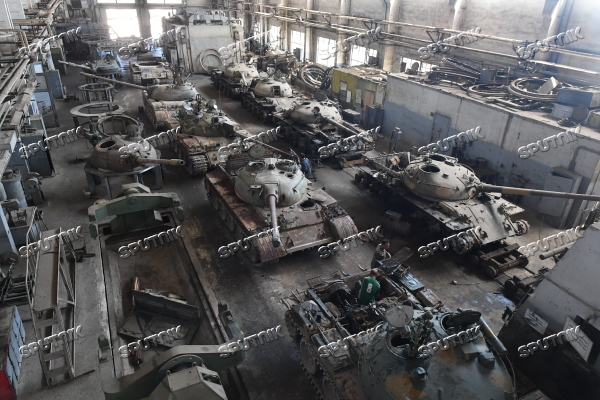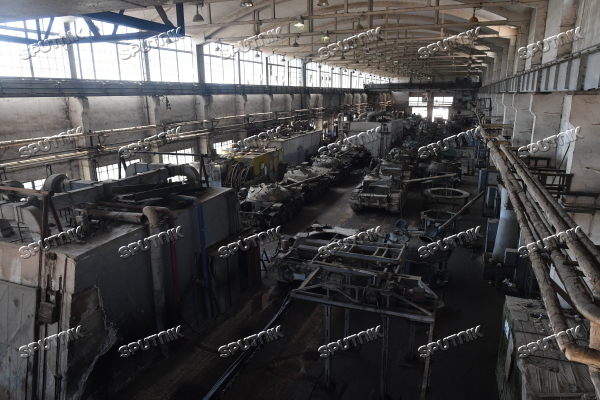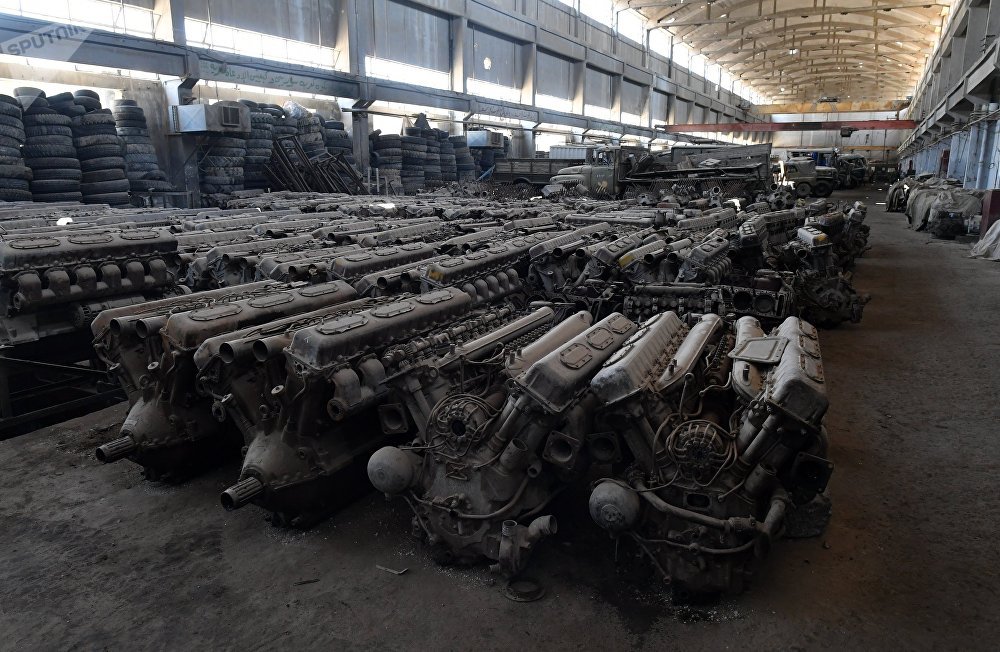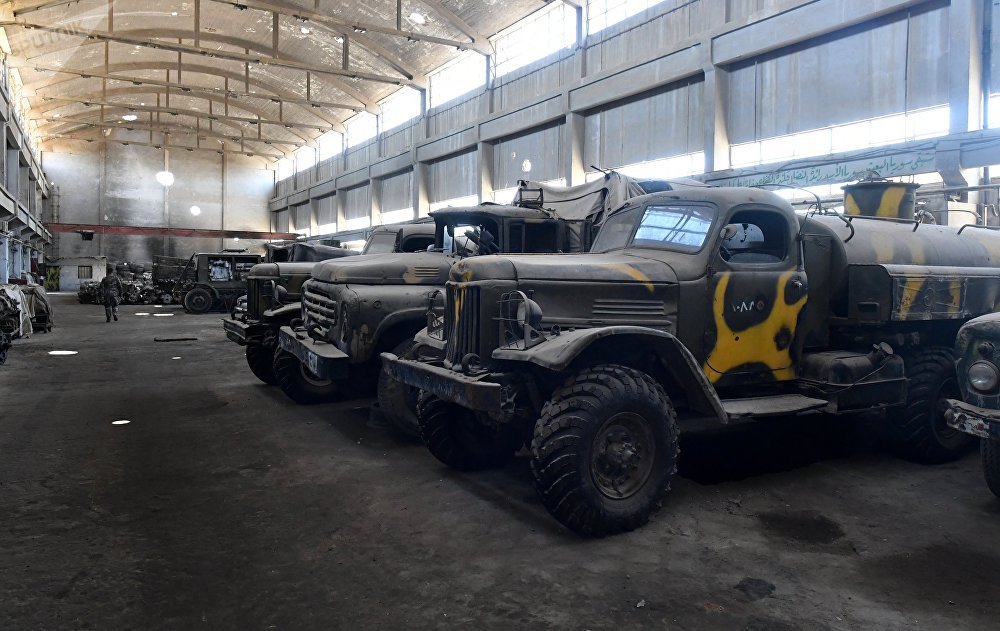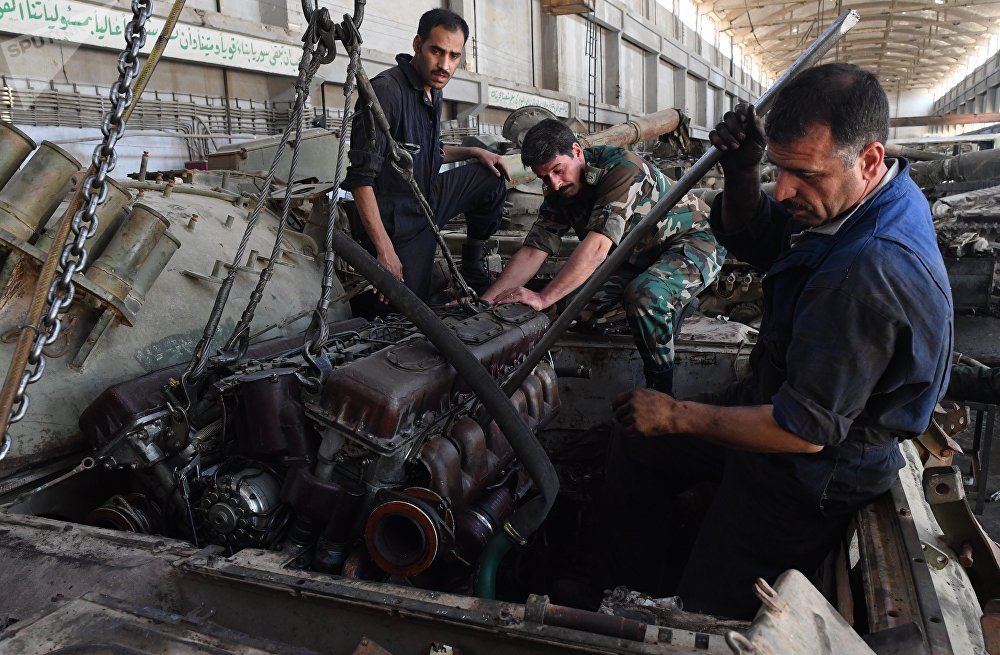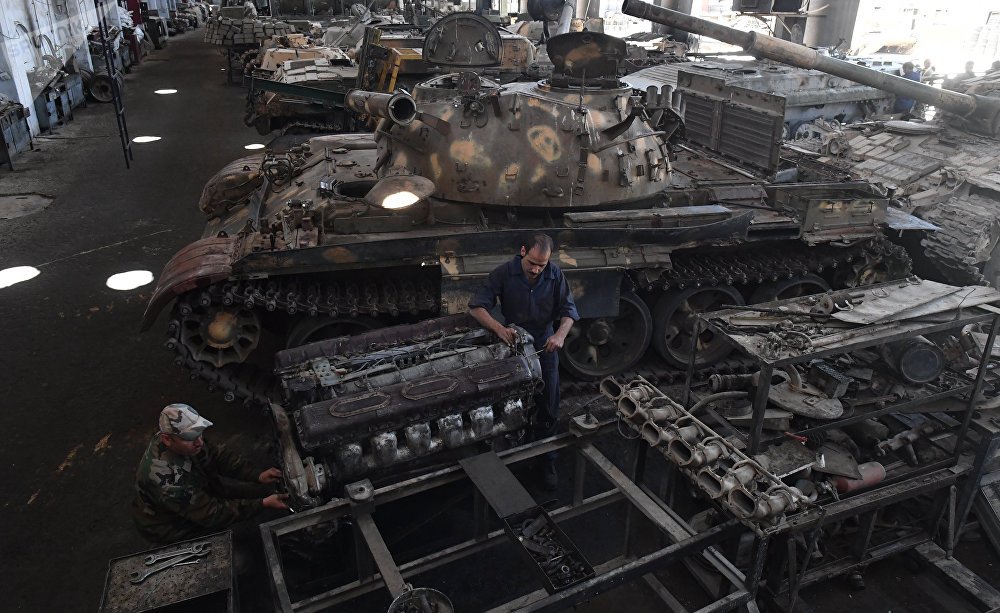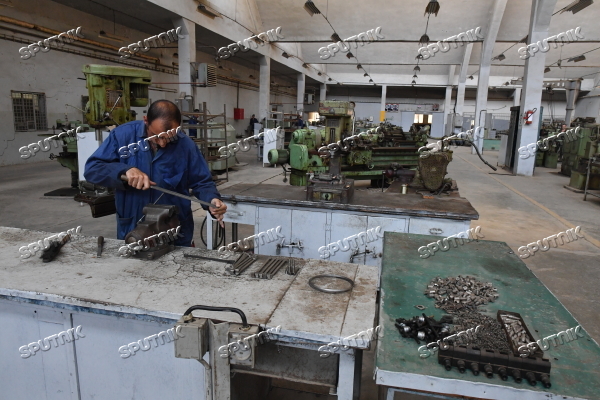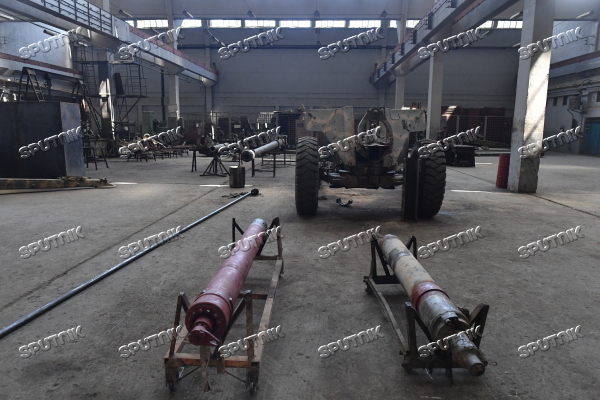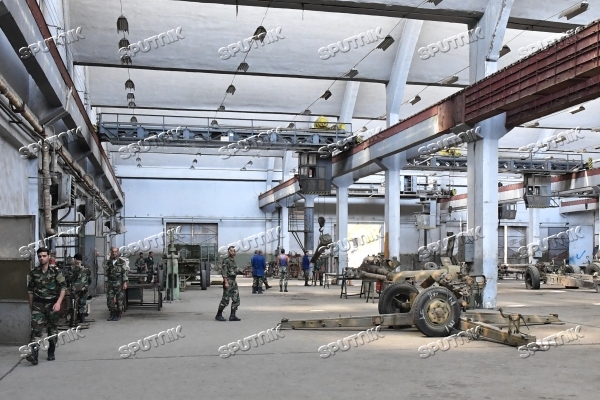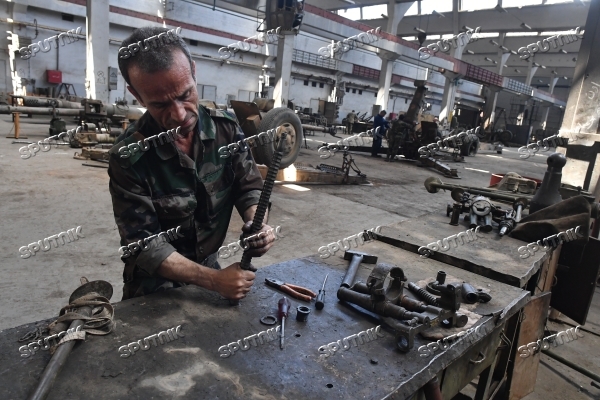Syrian Armed Forces in the Seventh Year of the War: From the Regular Army to Volunteer Corps
On April 28, 2017, the website of the Russian Council on Foreign Affairs (INF) published an interesting article by the head of the Center for Islamic Studies of the Institute for Innovative Development (IIS), Kirill Semenov, "The Syrian Armed Forces for the Seventh Year of the War: From the Regular Army to the Volunteer Corps" The current state of the Syrian government armed forces.
Since the beginning of the civil war in Syria, the regime of B. Assad has carried out measures to adapt his loyal armed formations to the conditions of internal conflict, to which they were absolutely unprepared.
Syrian Arab Army
In particular, the Syrian Arab Army (SAA) was dominated by extremely heavy armored and mechanized divisions. In total, there were eleven such formations (as well as two divisions of the "special forces" - the 14th and formed right before the start of the Civil War, the 15th). They were an overabundance of tanks and other armored vehicles and a shortage of light mobile, well-trained units. They also had a cumbersome organizational and organizational structure and could not solve the set tasks in the course of internal conflict.
Mass desertion finally put an end to the combat effectiveness of these divisions, with the exception of the 4th Mechanized, 14th and 15th Special Forces Divisions, and the "Republican Guard." Of the other divisions, whose headquarters were also the headquarters of the military sectors, their combat-ready component was isolated, usually reduced to one of four staff brigades. For example, in the 1st Panzer Division, such a brigade became the 76th and in the 10th division - the 56th Brigade. On the basis of the headquarters of the divisions, it was possible to create elements of command on the territorial principle, the majority of which are still in effect (except for the headquarters of the division in Rakka). They served as the basis for territorial or positional forces.
Most divisions or brigades with their numbers were units of this divisional and brigade level only on paper and in news bulletins. In reality, they do not represent the corresponding combat value. Rather, they resemble divisions and brigades of the Russian army during the first Chechen campaign. This situation continues and at the present time, and the second fall of Palmyra in December 2016, this clearly demonstrated. The military units located nearby in the Homs province could not identify any significant reinforcements and send them to help the Tadmore garrison, despite the fact that on paper these forces looked very menacing. Thus, the main problems of the regime in the first phase of the war were the acquisition of SAA personnel, as well as the absence of mobile forces and light infantry in it capable of quickly closing gaps in the event of a threat in one direction or another, as well as fighting in urban conditions And in the terrain with a complex terrain.
The main problems of the regime at the first stage of the war were the acquisition of SAA personnel, as well as the absence of mobile forces and light infantry in it capable of quickly closing gaps in the event of a threat, as well as fighting in urban conditions and terrain with complex terrain.
Formed after 1982 for operations in the mountains of Lebanon, four infantry brigades quickly lost combat capability, being recruited from disloyal Syrians regime. As a result, at the first stage of the war, the Asad regime could only rely on the 14th and 15th divisions of the special forces as mobile light infantry forces. Their units operated throughout the country, moving to various sites. The same combat work was carried out and individual shelves for special purposes. Special forces, of course, all these forces could be called very conditional, since they were used exclusively as light infantry and assault forces. But it should be noted that according to the level of combat training, they surpassed other Syrian formations and units.
As mobile armored and mechanized units that were used throughout Syria, brigades and battalions of the 4th mechanized division were reinforced by units of other "heavy" divisions on the most threatened areas. The tank and mechanized battalion groups of these formations were often used together with units of the 14th and 15th divisions of special forces, providing them with armored support. Subsequently, Lebanese Hezbollah detachments were often used as an infantry component of the 4th Division, as was seen, for example, in the fighting for Aleppo.
Nevertheless, all combat-ready SAA formations, including parts of the Republican Guard, which also retained combat capability, but were oriented primarily to the defense of the government districts of Damascus, and one brigade was deployed to protect Latakia, was clearly not enough not only for offensive operations, but Even for the defense of the so-called. "Useful to Syria". Actually, even now the number of SAA can hardly exceed 70 - 80 thousand soldiers.
Shabiha and the National Defense Forces
The regime did not have the opportunity to restore to full the combat effectiveness of the SAA due to mass evasion from service in it. In this situation, B. Assad was forced, in fact, to follow the path of his opponents, allowing any groups, parties and social movements loyal to him to create their own armed groups without any control over this process from Damascus.
Due to the formation of a large number of paramilitary structures of various origins, which were taken over by the local party units of the Baath Party, large businessmen associated with the B. Assad regime, or even criminal communities, during 2012 the problem of manning the armed forces was partially solved. They were fortified by the infantry divisions, which these paramilitary paramilitary units became. They were called the generalized name "Shabiha". Starting in 2012, Shabiha appears in all regions of Syria, controlled by the regime. At that time, the strength of these forces was estimated at 40,000. However, in the following it only increased.
Some units acted exclusively on a limited territory - in a city district or township, where they were formed. Others, for example, created by influential magnates, could be used throughout Syria. These units were also very different in terms of equipment and weapons, training of fighters, discipline. Some represented exclusively local forces, others had a complex hierarchy leading to Damascus. In any case, Shabiha saved the army from exhaustion and was in some cases even more effective and sustainable in city battles and in the defense of settlements than the SAA.
Many of these detachments gained fame, primarily related to their crimes against the civilian population, which is reflected in the UN documents. Contrary to popular belief, not all Shabiha groups were Alawite. Some were formed from Sunnis. For example, in Aleppo the role of Shabihi was played by the Sunni gangster clan "Barry", famous for its cruelty; Exactly the same reputation was won by a Christian criminal clan that had previously controlled the smuggling routes that had become Shabih in the area of Al Quseir.
In the next stage of the military conflict, those "irregular" irregular units were actually reformed, which they tried to bring to a common denominator and give them a more or less uniform structure. In this regard, the Syrian authorities, starting in 2013, create the "National Defense Forces" (NSO), subordinate to the "People's Committees". In the formation of these units, Iranian military advisers took part, who, as a model, offered the structure and training program for Basij, the Iranian paramilitary militia.
Foreign Shiite groups
Given that the SAA, even with the help of the NSO, was not able to reverse the course of the war, during this period, "Shiite jihadists" - foreign militants of various Shiite organizations from different countries appear in the country, which since then have become an integral part of the regime's armed forces. The most famous of them are the Lebanese Hezbollah and numerous Iraqi groups such as "Liva al-Zulfikar" and "Liva Asadullah al-Ghalib", which emerged on the foundation of the "pioneers" of the Shiite jihad in Syria from the Iraqi forces - "Liva Abu Fadl Al-Abbas "and a conglomerate of Iraqi Shiite groups associated with" Asaib Ahl al-Hakk ".
In the RAA, the units directly subordinate to the Iranian command of Al-Quds also operate. In particular, the Fatimiyun recruited from the Afghan Shiites (their total strength in the camps in Iran is 18,000, of which 3-5,000 are in Syria and are being changed on the basis of rotation) and the Pakistani Zeynabiyun.
"Syrian Hezbollah" - Syrian Shiite groups
Many of these foreign Shiite groups are starting to form their "sister structures" in Syria - both directly related to them and financed from Shiite funds. This is the so-called "Syrian Hezbollah", which includes the forces of the "Syrian national ideological resistance" - local branches of the Lebanese Hezbollah, as well as "Syrian Islamic resistance", to which the local Syrian factions of the Iraqi Shiite groups can be attributed. These forces consist of Syrian citizens - both Shiites and "Khomeiniized" Sunnis and Alawites. For example, the Iraqi "Kataib Sayyid ash Shuhada" formed its local branch from Syrians - "Liwa Sayyida Rukaya". "Acting in the besieged Deir-az-Zor" Liva Imam Zayn al-Abidin "is one of the many branches of the Lebanese Hezbollah in the Syrian Arab Republic. Most of these factions have virtually never entered the NSO and continue to enjoy independence.
Other groups, on the contrary, even became divisions of the AAA. So, in the 4th division there is a Shiite regiment of the local (Syrian) Hezbollah - "Liva Seif al-Mahdi". The total number of all formations connected with Iran can be estimated at 130,000 people. Of these, 30,000 are foreign Shiite militants and 100,000 are Syrian Shia groups and an NSO unit made up of Sunnis and Alawites and other Syrians, but under the control of Iranian military advisers and partially or fully funded by Iran.
"Tiger Forces", "Falcons of the Desert" and private military factions
It should be noted that there has been a clear "division of labor" between the SAA and the NSO, where the army largely plays the role of tank and heavy mechanized units, and the NSO - infantry units, sometimes even planted in armored vehicles (armored personnel carriers, armored vehicles) belonging to the army. Nevertheless, the army command makes efforts to create its own infantry assault component, which was supposed to supplement the forces of the Spn of the 14th and 15th divisions. Thus, in the autumn of 2013, the "Tiger Forces" appear, deployed in the eponymous division. Their formation reflects the general picture of the state of decline of the regular parts of the CAA, its complete decentralization and chaotization.
So, initially called to become another "elite army unit", these forces find serious sponsors associated with the Air Force intelligence and pursuing their own goals. As a result, they not only strengthen the 14th and 15th divisions, but, on the contrary, weaken them, luring the most prepared fighters. They also weakened the remaining army units, such as the 4th Mechanized Division or the 11th Panzer Division, from which the best officer cadres were also taken to the divisions of the "Tiger Force" division and its separate brigades - "Forces of the Cheetah" and "Forces of the Panther". In doing so, they submit to the SAA headquarters very formally, being, in fact, the units associated with the air force reconnaissance. Until finally, the Tiger Forces are turning into a fully autonomous "faction" of Syrian pro-government forces with their own tank units (equipped with the newest Russian T-90 tanks) and other units that provide them with a wide degree of independence.
The emergence of the Desert Falcon, already exclusively a private military company, albeit affiliated with the SAA, also weakens the composition of the 14th and 15th divisions. Now their names are very rarely seen in combat reports, unlike the same "Tigers" or "Desert Falcons".
Thus, in addition to the SAA and the defense forces, another component of the armed formations operating on the side of the regime appears, private units. In addition to the already mentioned compounds, they include the units Kataib al-Jabalaui and Leopards Homs (but there are others) formed by Rami Maklouf and his Al Bustan Association.
The Russian track is the volunteer assault corps
Finally, with the participation of Russian military advisers, the 4th Volunteer Assault Corps began to be formed. The place of its formation was the province of Latakia. The "Shield of the Coast" brigade, created in Latakia from local Alawite volunteers with the support of the "Republican Guard", served as an example.
The difference of the 4th Corps from the militia and territorial NSOs is that the service in it was not an alternative to the service in the AAA. The corps was to be formed from already served "veterans" or those who for one reason or another were exempt from service. But in fact, his manning, as it often happened, happens by enticing the fighters of other, including competing, structures, that is, the divisions of the Army or the NSO. Upon admission to this unit, civilian salaries were preserved, to which new payments were added, which indicates serious sources of funding.
As a result, by autumn 2015, of the 6 local volunteer brigades recruited (some, probably, the reconfigured brigades of the FNL) and the 103rd brigade of the Republican Guard, which served, most likely, as the headquarters and reserve of heavy equipment, as well as a number of other parts And the 4th Volunteer Volunteer Corps was deployed. He was able to achieve some success during the offensive operations in Latakia in late 2015 - early 2016. The very name "assault" indicated a changed trend. Now, instead of defensive structures like NSO and spontaneously arisen Brigades "Shields" (defense of the coast, etc.), the regime's forces are aimed at offensive operations.
After the end of the formation of the 4th building, the creation of a structure close to it, the 5th Volunteer Volunteer Corps, but not the regional one (Latakia), but of general importance, begins. It should be manned, including through the use of "hidden reserves". In particular, amnesty insurgents and deserters, as well as other persons avoiding military service will be involved in the service in his brigades. At the same time, there is a serious material incentive for entering the building in the form of preserving pre-war salaries and military prizes.
If the 4th Corps was deployed exclusively in Latakia and was more experimental, the places of formation of the 5th Corps are scattered throughout Syria, and the conditions of service in it are somewhat different from the 4th Corps. It is not excluded that the forces of the 5th Corps will work closely with those units at the military facilities on which they are formed (5th Panzer Division, 15th Division of the Spinoz Division). It is also expected that these forces can create the necessary infantry component for interaction with the "heavy" SAA battalions instead of the Iran-dependent FNL. This provides an opportunity to give the Russian military command a wide degree of independence in conducting military operations without the need to involve pro-Iranian formations and to change the course of an operation. This causes caution in Tehran. And, according to some information, Iran insists on its more active participation in the creation of the 5th corps.
In addition, a new trend in the development of the armed forces of the regime could be the strengthening of the "Republican Guard", which in the end will have to absorb all the most combat-capable parts of the SAA. As a model, a new compound formed in Aleppo, which will unite in its ranks all the units and subdivisions of the Syrian Arab Army operating in the area of the city, into a new formation - the 30th division of the "Republican Guard", can be used as a model.
***
At each new stage of reforms and attempts to strengthen the fighting efficiency of loyal forces, B. Assad's regime creates more and more new superstructures, each of which has a different degree of dependence or independence from Damascus. And each of them relies on the support of one or another foreign or domestic sponsor, being, in fact, his "proxy".
In itself, the presence of such a number of structures scattered and not fully controlled by Damascus lays a time bomb under Syria (and not only under the regime), impedes the implementation of ceasefire agreements, and requires the development of a clear line for their future.
